Despite the fact that seven in ten people prefer the phone to any other contact method, there are some common errors that companies continue to make in their customer contact operations.
James Tanner highlights 10 tips which could improve performance by more than 30 per cent.
1. Communicate the goal
Define and measure five contact-handling performance targets for phone, correspondence and face-to-face communication, e.g. to answer 90% of incoming calls within 20 seconds and reply to incoming correspondence within two working days. Ensure that your contact-handling teams know how to achieve them and report results to the board on a monthly basis. Set up an internal culture of achieving or exceeding the performance targets, incentivised by rewards.
2. Encourage self-service
A recent survey found that the average cost per contact is £15 for face to face, £12 for postal enquiries, £5 for phone enquiries and 6p for online.
For 120,000 contacts it would cost £1.8million to manage face-to-face contacts, £1.44million to manage postal enquiries, £600,000 to manage the phone enquiries and just £7,200 to manage the online self-service.
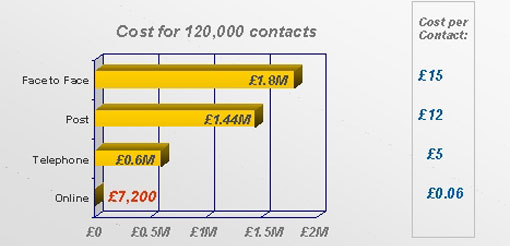
More and more call-handling teams have welcome messages on the phone to inform callers about self-service options, i.e. where frequently asked questions, payments & download forms can be found.
Self-service options are perfectly suited for simple enquiries across all contact channels (phone, correspondence and face to face). They can be set up using the following methods:
Interactive website, recorded messages, telephone automated payments, pro-active automatic alerts by email/SMS, PC terminals and in-house telephones in receptions for customer access.
To reduce simple enquiries we should automate, eliminate and simplify them monthly using well-executed self-service options.
3. Clear and short messages
Many call centre messages are too long and confusing. Less is more; the shorter and simpler the messages, the more likely the caller will select the correct option.
4. Call-handling staff performance
The key KPIs (key performance statistics/indicators) applied to measure the call-handling team members’ call performance should include: number of calls answered per person and an average call duration. In most contact centres there is quite a discrepancy in quality of service delivered by individuals.
5. Unique callers
It is important that customers only need to contact you once to get what they need. You should focus on eliminating repeat callers, and ensuring you have enough staff to answer the volume of unique callers on the phone rather than the total number of callers, see chart below:
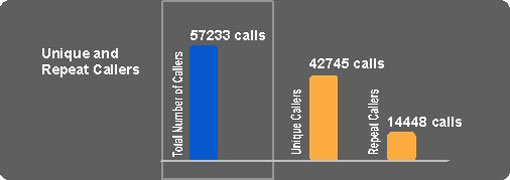
6. Managing peak call periods
Good call-handling team management practice is to be prepared for the busy periods and should ensure the right staffing levels. Average staffing levels required by hour of day, day of week and month of year can be easily calculated and should assist in forecasting future staffing requirements.
According to the Netcall research based on analysing 2m inbound calls, a caller waits an average of 12 minutes during peak times, 30 minutes in the public sector.
Often 9.00am-9.15am is one of the busiest 15-minute periods on a weekday, which means that all call-handling team members should to be logged in and ready to answer calls by 8.55am. Good supervision and the right incentives can make this work effectively. Some of our clients take advantage of available staff from the non-telephone pool, i.e. from the correspondence team, and encourage them to answer the phones during the peak times.
Call handlers should be cross-trained to answer different cross-departmental queries to reduce queue times and abandoned calls in any one section. Longer calls, e.g. specialist inquiries, could be transferred directly to a specialist team to free the agent up for the next available call.
7. Independent audit of performance
There are many reasons why an external and independent call-handling specialist can offer better help in auditing your call handling performance. Their independence, in-depth subject expertise and clear focus will help you deliver results faster than any internal resource.
8. Prioritise urgent calls
Identify and prioritise the different types of customer contact so that the most important ones are answered 100% of the time and no calls are abandoned.
9. Screen popping
By deploying screen popping software, call-handling teams can view the telephone number of the caller, and if it is an existing customer (or prospect), their name, address, account number, and any notes/history.
10. Real-time statistics
Call-handling team members and supervisors need to have constant visibility of their individual and departmental call statistics in real time, i.e. the number of live calls waiting in the queue. This can have an immediate impact on their behaviour and performance.

James Tanner
James Tanner is the Managing Director of Communications Department Ltd based in the UK.
Author: Jo Robinson
Published On: 30th Jun 2010 - Last modified: 12th Aug 2025
Read more about - Hints and Tips, Call Handling, Metrics, Monitoring, Performance Management







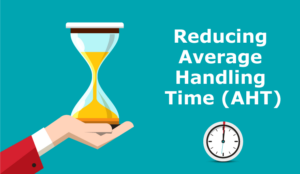

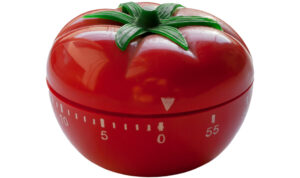
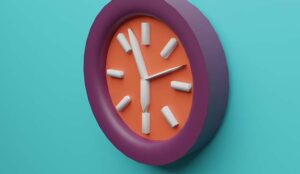






























Tweaking call handling further can be achieved by reducing key strokes, there are a number of Apps available that are in the form of a webservice/api. They allow entry of an address with just the postcode and house number, speeding up the process and ensuring accuracy. There are others that will validate telephone numbers and email addresses. Improving call handling performance is not just about speed but accuracy as well.
Excellent article. It’s good to see truly helpful articles such as this one. We truly believe in goal achieving metrics. They do make a difference. Too many centres short change the agents by not providing meaningful metrics. Articles like this accentuate the importance of them. Thank you.
Nice article James – easy to read and concise. Some good sound advice for all.
The challenge is once decision is reached – what the ACTION looks like – how to achieve the desired improvements. I guess that’s where you come in – right?
This is the best article on call handling I have read. Fully comprehensive and well explained what more can be said.
Dear John Turtle
Over and above the metrics outlined within our article, another useful metric is to measure the customer experience and how satisfied they are with your service.
Best wishes
yery good
good tips this improve my performance as an agent and i will also gain amasing experience as an intern in the company i work for.
This is an excellent article, points discussed and ideas are the call centre material and understandable. Hope this will assist me and my team.
It was wonderfull going through your article.
You ROCK man!!!!!!!!!
great piece, practical and very helpful. thanks
Great tips, my favourite is tip#3, short message is very important, it’s all about speed for businessmen.
Some great tips here, one that rings (sorry for the pun) most true for us is having real-time stats so you can respond quickly to any surpises in call volumes
Good!
good tips,,, thanks for that
great information. pleasure reading your article